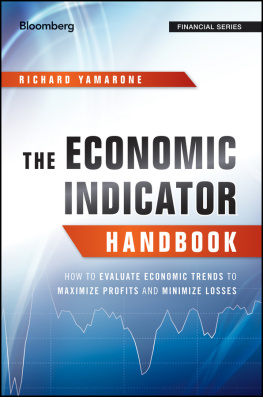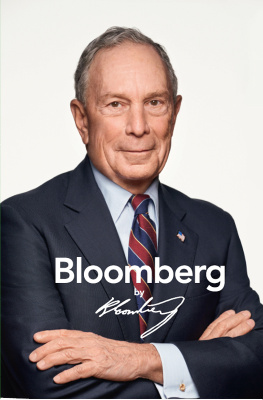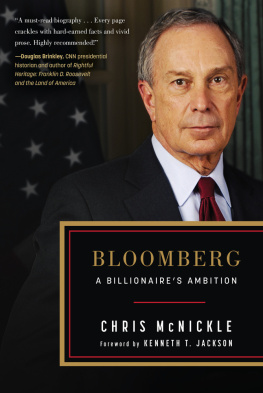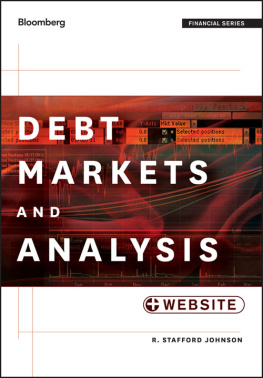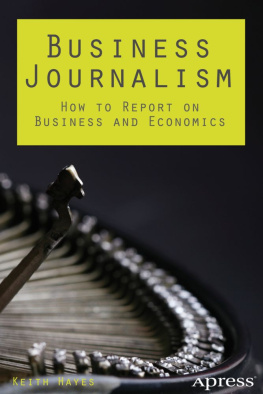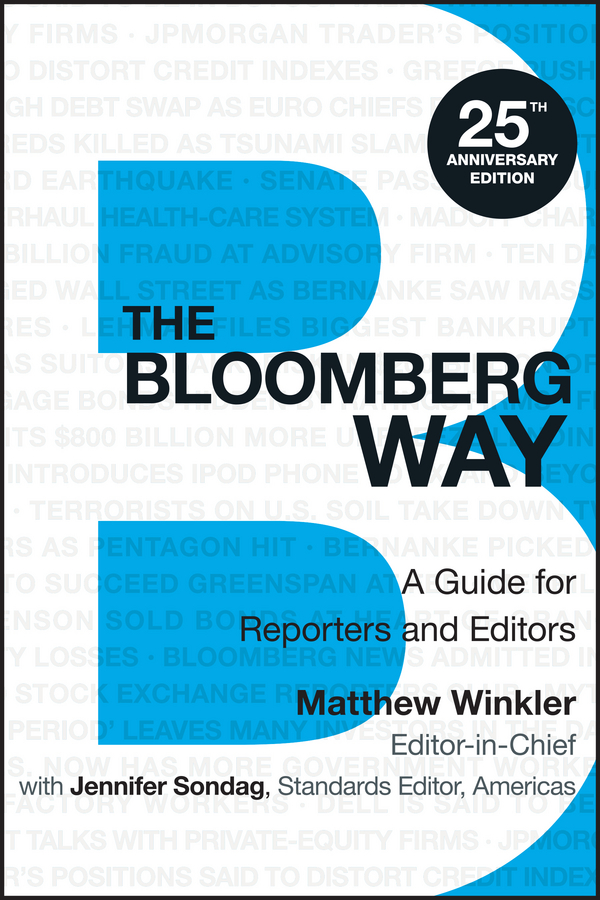
Contents
Pages
Guide
Since 1996, Bloomberg Press has published books for financial professionals, as well as books of general interest in investing, economics, current affairs, and policy affecting investors and business people. Titles are written by well-known practitioners, BLOOMBERG NEWS reporters and columnists, and other leading authorities and journalists. Bloomberg Press books have been translated into more than 20 languages.
For a list of available titles, please visit our website at www.wiley.com/go/bloombergpress.
THE BLOOMBERG WAY
A Guide for Reporters and Editors
Matthew Winkler
Editor-in-Chief
with Jennifer Sondag, Standards Editor, Americas
Cover design: Wiley
Copyright 2014 by Matthew Winkler. All rights reserved.
Published by John Wiley & Sons, Inc., Hoboken, New Jersey.
Published simultaneously in Canada.
The Bloomberg Way was previously published in eleven editions by Bloomberg for its employees. The twelfth edition was published by Wiley.
No part of this publication may be reproduced, stored in a retrieval system, or transmitted in any form or by any means, electronic, mechanical, photocopying, recording, scanning, or otherwise, except as permitted under Section 107 or 108 of the 1976 United States Copyright Act, without either the prior written permission of the Publisher, or authorization through payment of the appropriate per-copy fee to the Copyright Clearance Center, Inc., 222 Rosewood Drive, Danvers, MA 01923, (978) 750-8400, fax (978) 646-8600, or on the Web at www.copyright.com. Requests to the Publisher for permission should be addressed to the Permissions Department, John Wiley & Sons, Inc., 111 River Street, Hoboken, NJ 07030, (201) 748-6011, fax (201) 748-6008, or online at http://www.wiley.com/go/permissions.
Limit of Liability/Disclaimer of Warranty: While the publisher and author have used their best efforts in preparing this book, they make no representations or warranties with respect to the accuracy or completeness of the contents of this book and specifically disclaim any implied warranties of merchantability or fitness for a particular purpose. No warranty may be created or extended by sales representatives or written sales materials. The advice and strategies contained herein may not be suitable for your situation. You should consult with a professional where appropriate. Neither the publisher nor author shall be liable for any loss of profit or any other commercial damages, including but not limited to special, incidental, consequential, or other damages.
For general information on our other products and services or for technical support, please contact our Customer Care Department within the United States at (800) 762-2974, outside the United States at (317) 572-3993, or fax (317) 572-4002.
Wiley publishes in a variety of print and electronic formats and by print-on-demand. Some material included with standard print versions of this book may not be included in e-books or in print-on-demand. If this book refers to media such as a CD or DVD that is not included in the version you purchased, you may download this material at http://booksupport.wiley.com. For more information about Wiley products, visit www.wiley.com.
ISBN 978-1-118-84226-3 (Paperback)
ISBN 978-1-118-84231-7 (ePDF)
ISBN 978-1-118-84233-1 (ePub)
Introduction
On the second Wednesday in November 1989, I got a phone call that would mark the birth of an implausible news organization led by an unlikely publisher: Hi, its Bloomberg. I need some advice. What would it take to get into the news business? Michael Rubens Bloomberg, former partner of Salomon Brothers and now president and founder of Bloomberg Financial Markets, was asking me, at the time probably the happiest reporter at the Wall Street Journal.
The question was intriguing. Bloomberg had no experience in journalism. His almost two decades of selling securities would prove to be an advantage. The computer terminal he created in 1982 with his name on it already used an array of historical and current data to show investors and traders how to buy the cheapest securities and to sell the most expensive onesa service unmatched by any news company and as valuable as any Pulitzer Prize-winning story, or so I thought.
Mike Bloomberg surprised me when I parried his initial query about what it would take to get into the news business with another question: All right, I said. You have just published a story that says the chairmanand I mean chairmanof your biggest customer has taken $5 million from the corporate till. He is with his secretary at a Rio de Janeiro resort, and the secretarys spurned boyfriend calls to tip you off. You get an independent verification that the story is true. Then the phone rings. The customers public-relations person says, Kill the story or we will return all the terminals we currently rent from you.
What would you do? I asked.
Go with the story, Mike said. Our lawyers will love the fees you generate.
That was the deciding moment. I could then say, You and the few hundred people working at Bloomberg know more about money, markets and balance sheets than any collection of journalists. You show this knowledge daily on your electronic screens. If you can somehow marry this knowledge to prose and attach comprehensive data to each published story, you will have something that doesnt exist anywhere.
Bloomberg intuitively knew as much. Here was an opportunity to make the world of money more transparentnonstop, throughout the day, throughout the yearas only people who had the experience of buying and selling money could. The journalists who would join Bloomberg would be the translators and narrators. If we could make Bloombergs printed and spoken word lucid enough, even to Aunt Agatha, Bloomberg would become a journalistic benchmark for instant perspective on money. And money increasingly was becoming the mother of all stories. For those who recall Watergate, the best advice any two reporters received in the 20th century was: Follow the money!
The first Bloomberg byline appeared June 14, 1990, on 9,500 leased computer terminals delivering real-time data and news to people with the most at stake. That byline came at the end of four paragraphs exemplifying the essence of the Bloomberg Waya new model for the news business at the end of a century celebrated for the journalism that brought down governments, created celebrities and encouraged everyone to be masters of money. None of the dozen Bloomberg reporters and editors in New York and London in their initial summer would have dared to predict that they would become two hundred times more numerous in bureaus from Atlanta to Zurich.
The Bloomberg Way, a guide to reporting and editing the story of money in all its forms, initially was a 30-page manifesto for writing about currencies, bonds, stocks, commodities and the economy. It aspired to create the sensibility for an electronic newspaper, and it was inspired by an exquisite little book, The Elements of Style, by William Strunk Jr. and E.B. White. This expanded Bloomberg Way remains true to its origins.
Mike Bloomberg laid the foundation for a global news organization when he created the first computerized system that provided the relative value of bonds. For someone who had traded only equity securities, this was especially noteworthy and it would prove unique in 1982, when Merrill Lynch became the first customer of the so-called Market Master from the startup Innovative Market Systems. Less than eight years later, he decided his now-eponymous company couldnt prosper without news.
Next page




